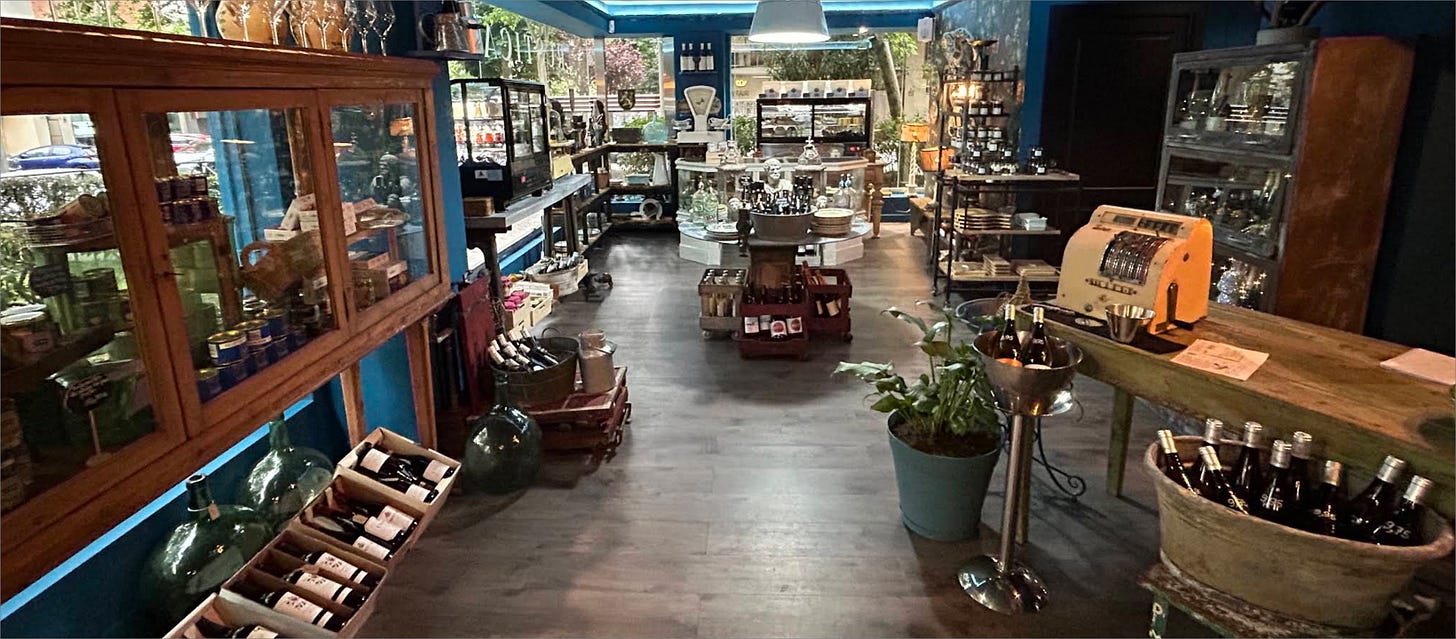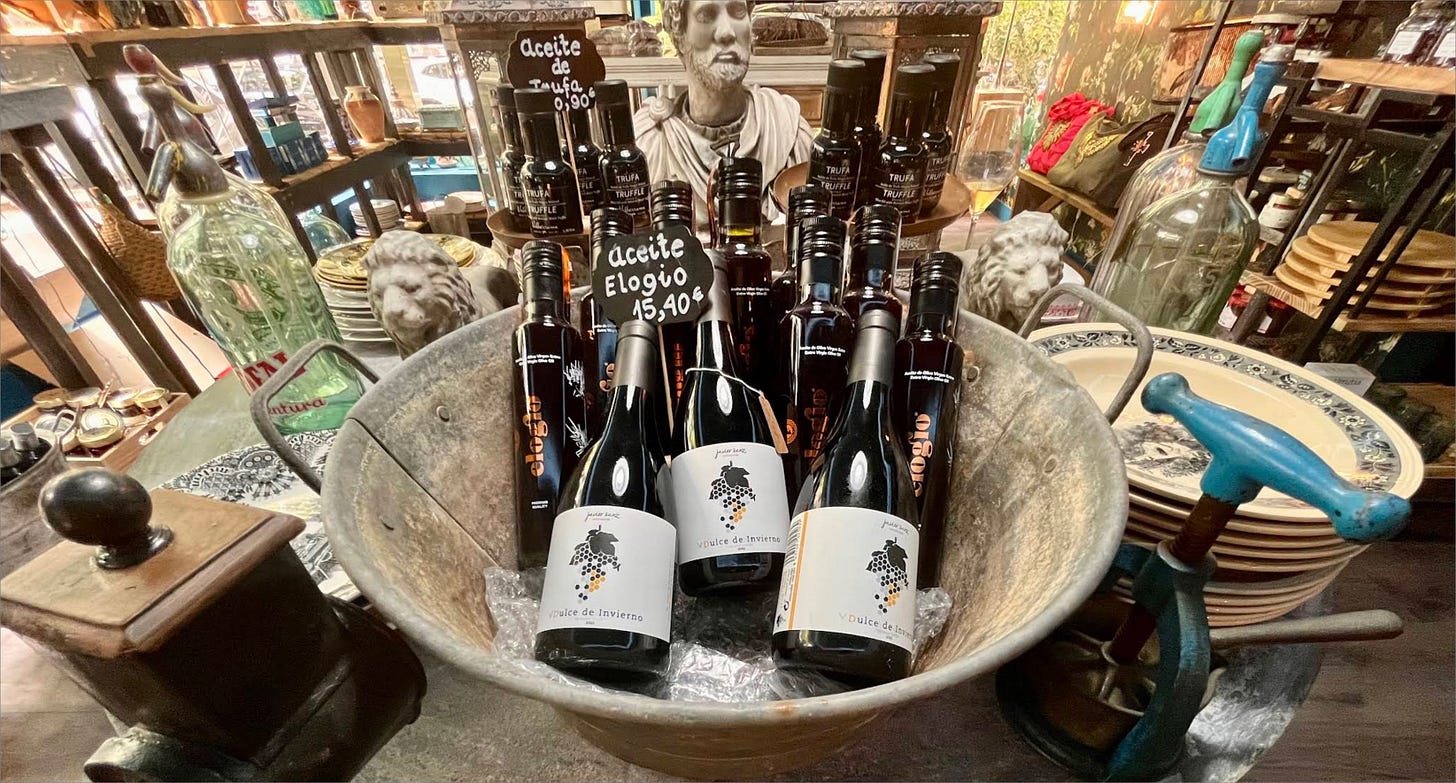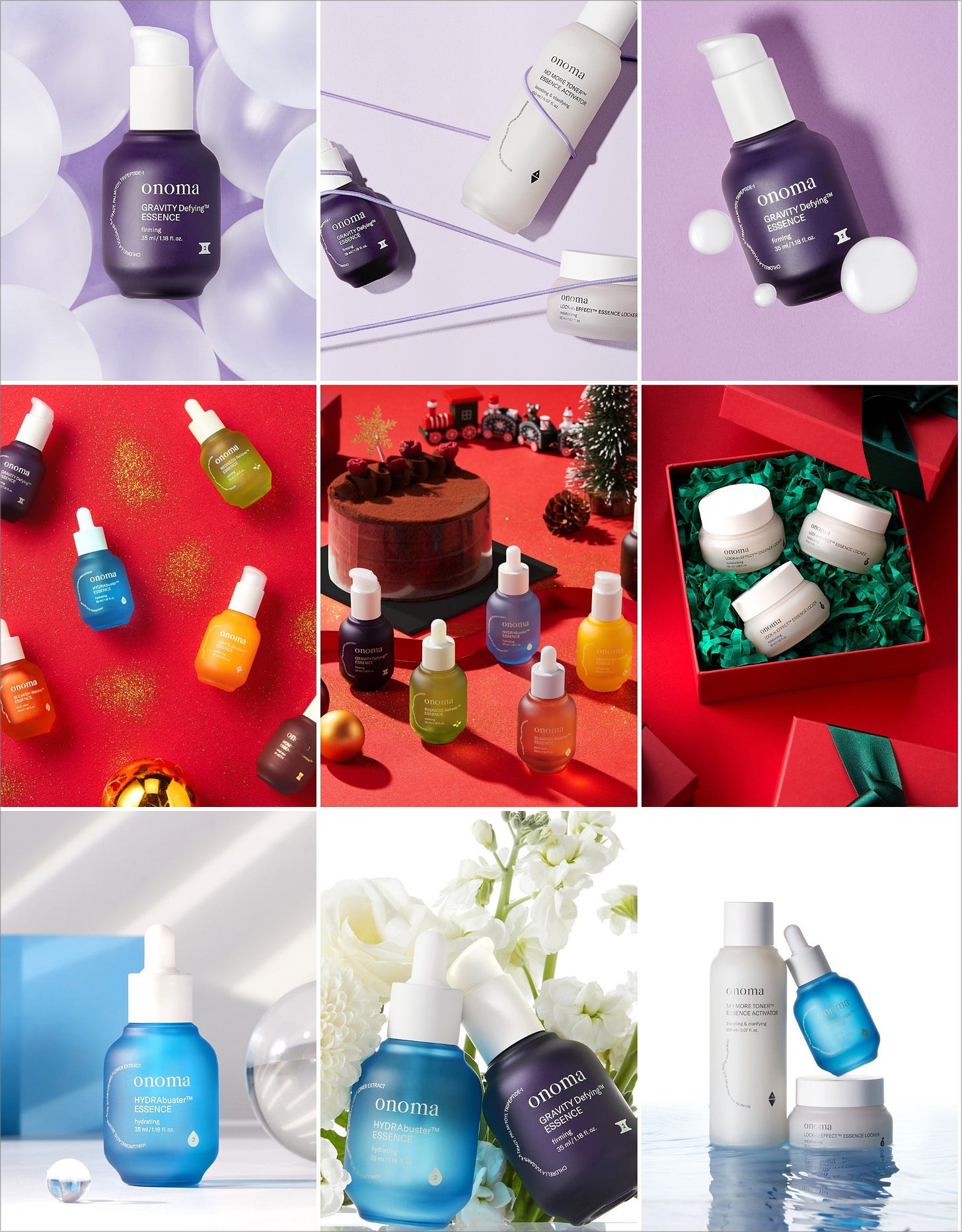The shopkeeper who outsold Shopify
A hidden wine shop near Real Madrid taught me more about DTC than any Ecommerce course ever could. Write down these 4 DTC lessons.
A few weeks ago, my wife and I stumbled into a secret wine shop near Santiago Bernabéu stadium — yes, home of Real Madrid, arguably the best soccer team on Earth 🙌
From the outside, the place looked like a dusty antique shop. Narrow. Quiet. The kind of spot where you’d expect to find a vintage Tiffany lamp, not a rare bottle of Ribera del Duero with a wild backstory.
We walked in purely out of curiosity. What happened next felt like stepping into a movie.
Right after we crossed the door, the owner —a gray-bearded man with a documentary narrator’s voice and a warm smile— asked what we were looking for. He noticed we’d drifted toward the good stuff: the wine section.
“We’re looking for a nice bottle to gift… or maybe keep. Not sure yet.”
He smiled. “That can be fixed. Come upstairs.”
We followed him up to a floor that turned out to be… his wine temple.
Hard to describe it properly. It was chaos and harmony at once. There was art and there was structure. Inventory, yes — but also the warmth of a lived-in space full of memories. Low shelves like an old deli, handwritten labels, soulful objects.
But most of all: stories everywhere.
And you know me — I’m a sucker for stories. I was like a kid in Disney World.
He said, “You can’t just stand here doing nothing. Let me pour you a glass.”
We tasted a few wines, each one with a surprising tale behind it. He shared anecdotes from every vineyard he works with — all handpicked with obsessive care. Brought out a couple of snacks. Amazing.
Next thing we knew, over an hour had flown by. We learned, laughed, toasted, soaked in the whole vibe.
And yes: we left with way too many bottles. We wanted to recreate that magic at home. To surprise friends with this hidden gem and the stories that came with it.
And as we walked out I thought: this man doesn’t sell wine.
He sells experiences. And he does it masterfully.
No email flows. No CRM. No Shopify.
And that made me stop and think…
What DTC Brands Can Learn From a Guy in a Wine Shop?
Look, ecommerce has its strengths. But let’s be real — too many online stores feel like they were built by teams who’ve forgotten what selling to humans looks like.
So today, I’m breaking down 4 things this secret wine shop does better than most ecommerce brands — and how you can steal those moves for your DTC.
1. Design the customer journey with intention — not like a warehouse layout.
This wine shop didn’t have 500 bottles scattered around like a never-ending scroll of products.
There was a central table with “just arrived,” a shelf with “house favorites,” and a corner for “hidden gems” (my personal weakness). Every section told a story. Every spot was a moment designed for the visitor — curated by the owner.
Online, most stores throw everything on a grid: categories, filters, price sliders. Boom. It’s cold and overwhelming.
But your customer doesn’t always know what they want. Sometimes they just need you to put the “special stuff” right in front of them.
Like Typology in skincare: instead of throwing you into a product jungle, they ask three simple questions and recommend your ideal products.
Pro tip: Create landing pages based on moods, moments, or needs. Group products that belong together. Ask your user what they’re looking for — then show them just that.
Build story-driven paths, not product mazes.
2. Tell stories. Don’t just list features.
A tech sheet about a wine bottle wouldn’t have sold us anything.
But hearing about a small family winery in Galicia surviving a brutal frost thanks to pure grit, how they use chestnut barrels instead of oak, or why a particular wine is named after a grandmother who taught the winemaker how to cook… that got us hooked (that floored me!).
That turned a bottle into a story you want to share over dinner with friends.
And on your site? How many product pages sound like “100% cotton, regular fit, white tee”?
Thanks for nothing, Wikipedia.
Look at Allbirds: they don’t just sell shoes — they sell sustainability, recycled materials, feel-good manufacturing. Warm images. Real copy. Emotional hooks.
By the time you get to the product, you already want it.
Pro tip: Rewrite your product pages like you’re explaining them to a friend. Share the “why,” not just the “what.” Add photos, quotes, micro-stories.
Make your products desirable. Not just scannable.
3. Show up for customers when it matters most.
When we were torn between two bottles, the owner didn’t vanish. He sat down with us:
“If it’s for a formal dinner, I’d go with this one. But if there’s strong cheese involved… this other one’s magic.”
No pressure. Just advice. You felt guided. You felt seen.
In ecommerce, this moment is usually MIA. Users browse a sterile catalog, get overwhelmed, and bounce. You expect the “Add to Cart” button and free shipping to do all the heavy lifting. No wonder abandonment rates are sky-high.
But brands like Asphalte (French menswear) or Kitchenaid know better. They offer comparisons. Highlight real reviews. Share how-to videos. Have actual humans in chat (that don’t jump-scare you on entry).
Pro tip: Identify your drop-off points. Then add value there. A sharp comparison. A genuine review. A helpful answer to a common doubt. Helping ≠ interrupting. It’s just being there when it counts.
4. Wake up the senses — even through a screen.
That wine shop smelled like flowers and old wood. You could hear soft jazz playing. The floor creaked — in a cozy way. The whole place whispered, “you’re somewhere special.”
Now ask yourself: Does your ecommerce site say anything without words?
It’s not easy. But it’s doable.
Look at what Onoma does with skincare photos — pure emotion, pure sensation.
Pro tip: Check your photos. If they scream “stock image,” you’ve got work to do. Add textures, sounds, short videos.
Describe how it feels, not just how it looks. Show customers actually using your stuff on social. Bring life to the screen.
TL;DR — Takeaways
Selling online doesn’t mean forgetting how to sell. It means translating what’s always worked… into digital.
Behind every cart is a person. Not a KPI.
We live in a world of AI, automations, smart prompts, instant personalization. And yeah, I’m all for it.
But that’s exactly why the human touch is more valuable than ever.
Warmth. Intention. Real conversation — online.
So next time you review your ecommerce experience, ask yourself:
Would the wine guy near Santiago Bernabéu do it this way?
If not… maybe it’s time to open a bottle, grab a blank page, and rethink a few things.
▶︎ Oh — and if you ever find yourself in Madrid, and you’re into stories and customer magic, go visit the secret wine shop.
Every word of this story? 100% true.








